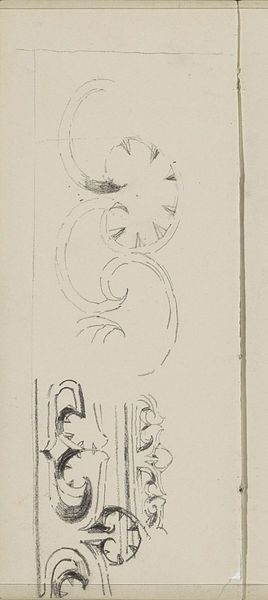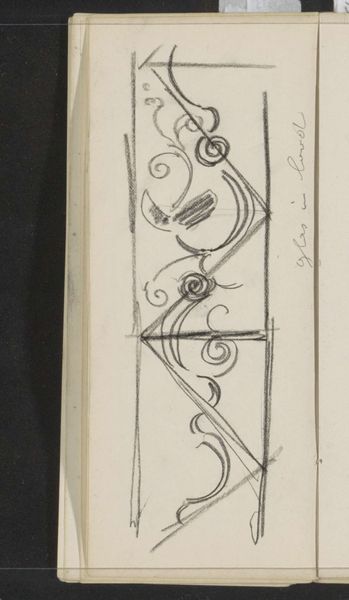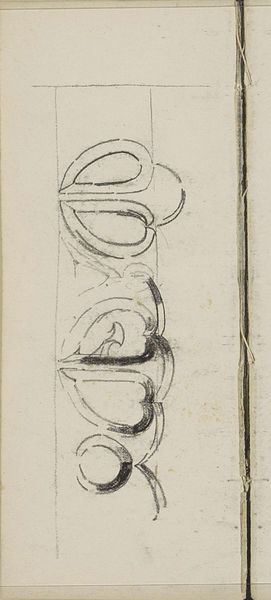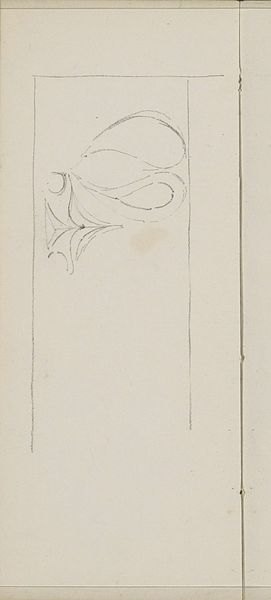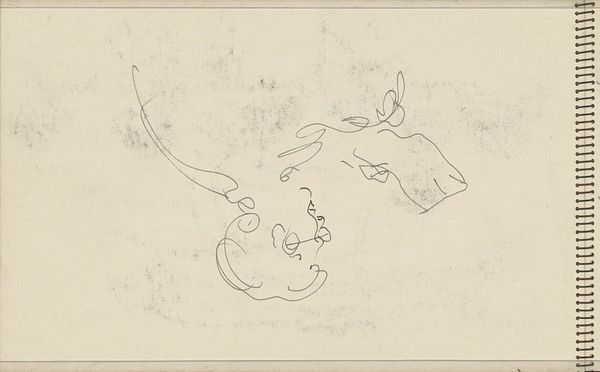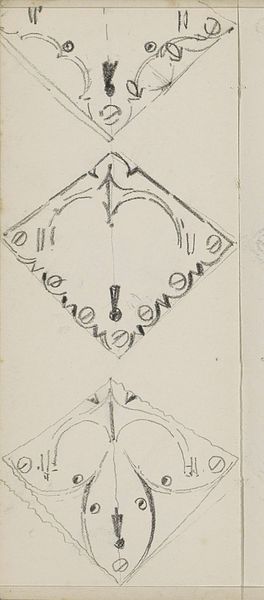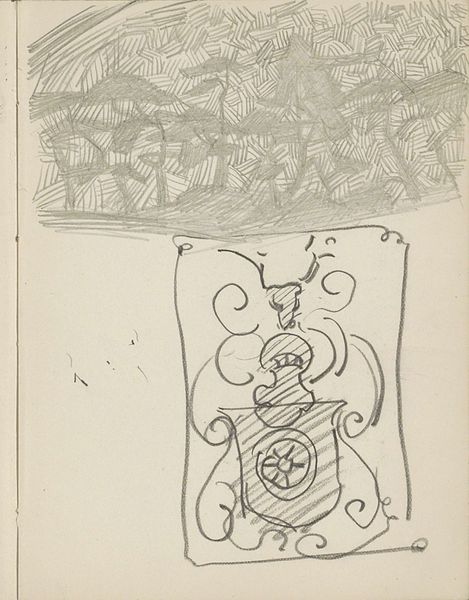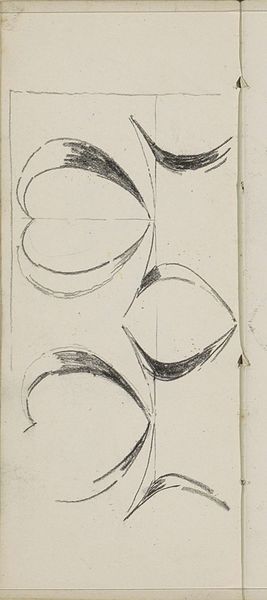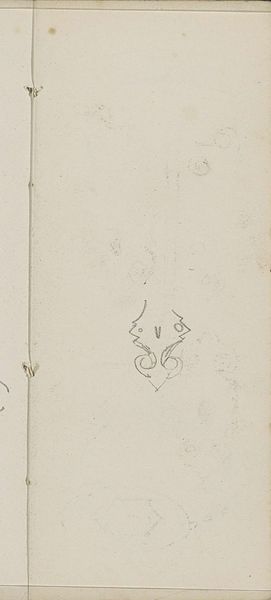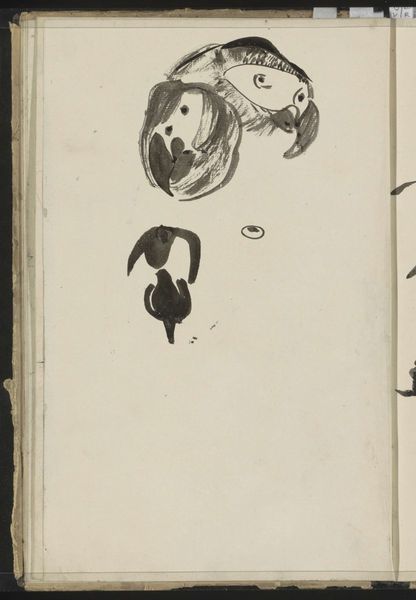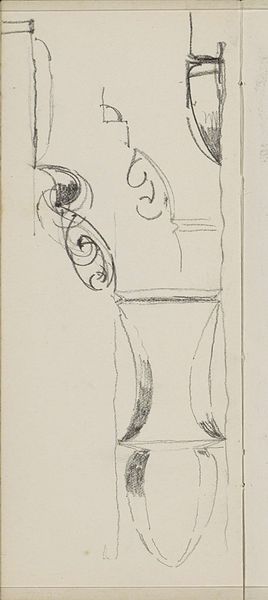
drawing, pencil
#
drawing
#
geometric
#
pencil
Copyright: Rijks Museum: Open Domain
Curator: What strikes me first is the intimacy of this piece, almost like a glimpse into a personal journal. Editor: It certainly feels like a study, a working drawing rather than a finished piece. We're looking at Gerrit Willem Dijsselhof's "Sleutelgaten," made between 1876 and 1924. It's a pencil drawing on paper, housed here at the Rijksmuseum. Curator: Those keyholes are presented not just as functional objects, but as emblems, each surrounded by unique decorative flourishes that feel incredibly evocative. Are we invited to think about who holds the keys, who is locked out? Editor: Exactly! Dijsselhof was deeply interested in design and craft. Notice the materiality of the pencil strokes. The drawing isn't simply about representation; it highlights process, labor, and the value he placed on functional, often overlooked, objects. These are, after all, very ordinary items. Curator: But transformed! The sinuous lines and swirling forms—they border on abstraction and feel quite progressive when viewed in light of the Arts and Crafts movement and its complex negotiation of class. Did Dijsselhof intend to elevate these everyday mechanisms? Editor: That's precisely what the focus on material details helps to illustrate. The way he renders metal's potential for intricacy shifts the keyhole from being merely functional to aesthetic. The artist's choice elevates the labour required to design these metal adornments, connecting design and lived experience. Curator: And beyond design, it might make a powerful commentary about gender. Who possessed the keys to the domestic sphere during this time, what did those spaces represent? Did it equate to economic power or not? The keyhole becomes more than an object here, it represents identity. Editor: These considerations open interesting debates around material, gender and design, showing how seemingly everyday items tell unique histories. Curator: A study that really invites us to unlock layers of social significance hidden in plain sight. Editor: Absolutely, it causes you to wonder about the journey and materials embedded into common elements around you.
Comments
No comments
Be the first to comment and join the conversation on the ultimate creative platform.
